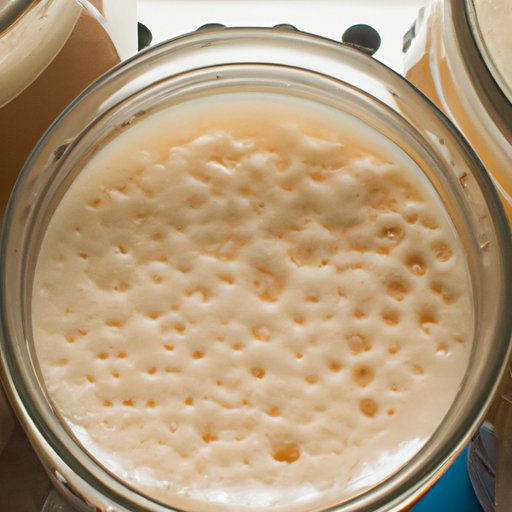Introduction
Starter cultures are microscopic organisms (yeast, bacteria, and other microorganisms) that are used to initiate the process of fermentation in food products. They are essential for producing fermented foods such as cheese, yogurt, beer, wine, bread, and sauerkraut. Starter cultures provide the environment needed for fermentation to occur, as well as the flavor and texture of the final product. In this article, we will explore what starter cultures are, the benefits of using them in home fermentations, different types of starter cultures, how to make your own starter cultures at home, and the history of starter cultures.
Benefits of Using Starter Cultures in Home Fermentations
Using starter cultures in home fermentations can offer several advantages. The most important benefit is improved flavor and texture of the food product. Starter cultures create an ideal environment for fermentation to occur, resulting in better tasting and more consistent results. Additionally, starter cultures can also help increase the shelf-life of fermented foods. Since they produce lactic acid, which acts as a preservative, the food will stay fresh for longer periods of time. Finally, starter cultures can also help ensure the safety of the food product by inhibiting the growth of harmful pathogens. This helps prevent food-borne illnesses, ensuring that the end product is safe for consumption.

Guide to Different Types of Starter Cultures
There are several different types of starter cultures available. The most commonly used are lactobacilli, yeast, and bacteria. Lactobacilli are the most widely used type of starter culture and are responsible for the production of lactic acid. This helps give the food product a sour flavor and also acts as a preservative. Yeast is another type of starter culture, which is used to produce carbon dioxide and alcohol. Bacteria are also used in some starter cultures, which help produce acids and enzymes that aid in the fermentation process.

Making Your Own Starter Cultures at Home
Making your own starter cultures at home is relatively simple and can be done with minimal equipment. The first step is to gather the necessary ingredients. You will need a carbohydrate source (such as flour, sugar, or honey), water, and a small amount of active yeast or bacteria. Once you have gathered the ingredients, it’s time to prepare the starter culture mixture. This involves mixing the ingredients together and allowing them to sit for several days. During this time, the microorganisms will begin to multiply and the fermentation process will start. After a few days, the starter culture should be ready to use in your home fermentation projects. It is important to monitor the progress of the fermentation process, as too much or too little fermentation can affect the end result.

Comprehensive Look at the History of Starter Cultures
The use of starter cultures has a long history. Early civilizations used wild yeasts and bacteria to ferment food products, and this practice was continued by later cultures. Over time, the starter culture process evolved and became more refined. For example, in the 1800s, scientists began to isolate and study specific strains of bacteria and yeast, which allowed them to develop more efficient starter cultures. Today, starter cultures are widely used in commercial food production, and advances in technology have made it easier than ever to produce starter cultures at home.
Conclusion
In conclusion, starter cultures are essential for producing fermented foods. They provide an ideal environment for fermentation to occur, as well as improved flavor and texture of the food product. Additionally, they can help increase the shelf-life of fermented foods and enhance safety from pathogens. There are several different types of starter cultures, including lactobacilli, yeast, and bacteria. Making your own starter cultures at home is relatively simple and can be done with minimal equipment. Finally, the use of starter cultures has a long history and has evolved over time. With advances in technology, it is now easier than ever to produce starter cultures at home.
(Note: Is this article not meeting your expectations? Do you have knowledge or insights to share? Unlock new opportunities and expand your reach by joining our authors team. Click Registration to join us and share your expertise with our readers.)
